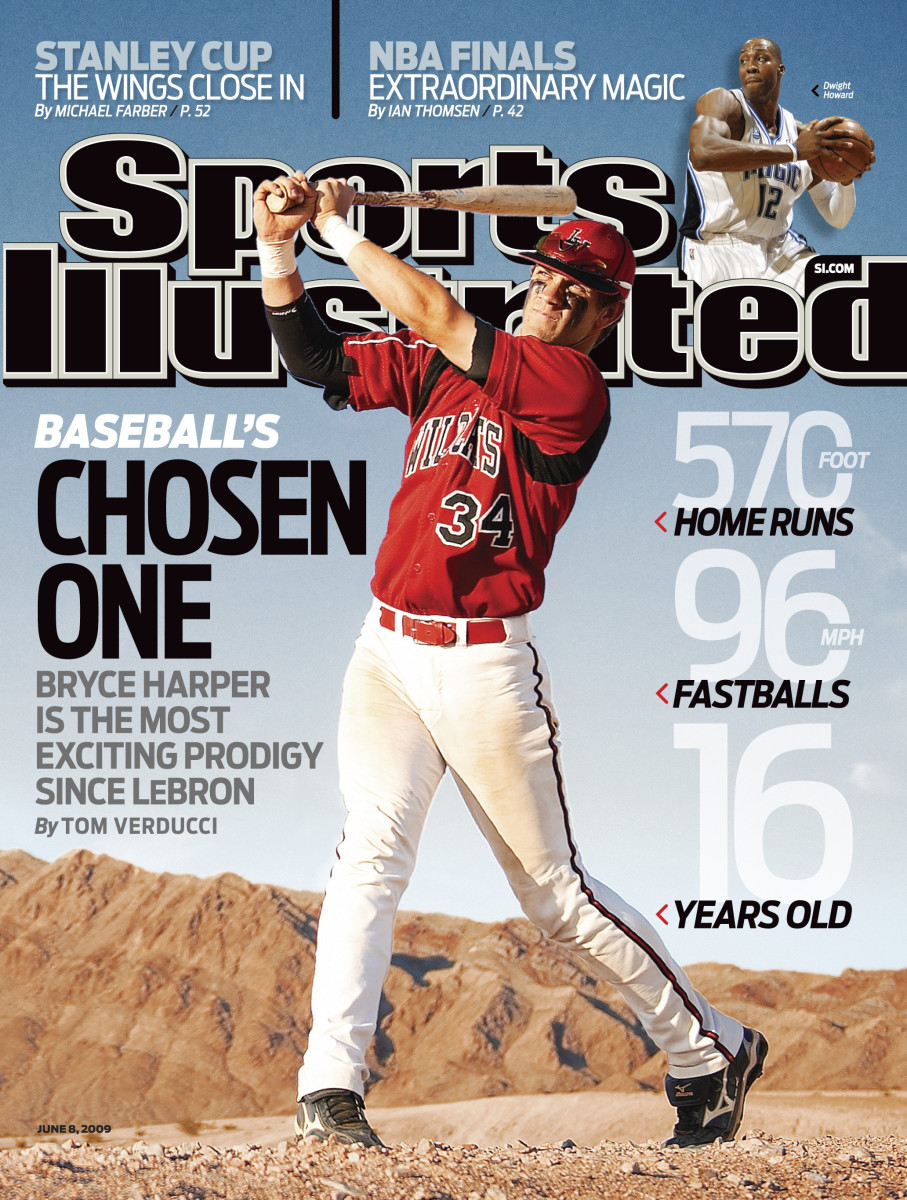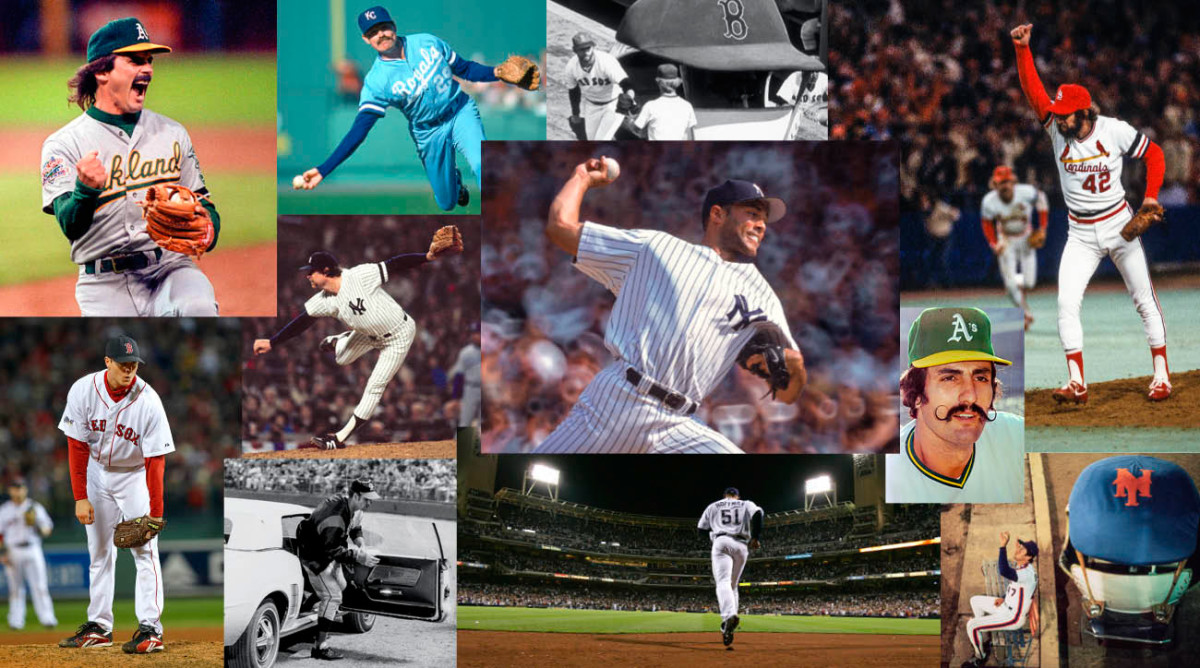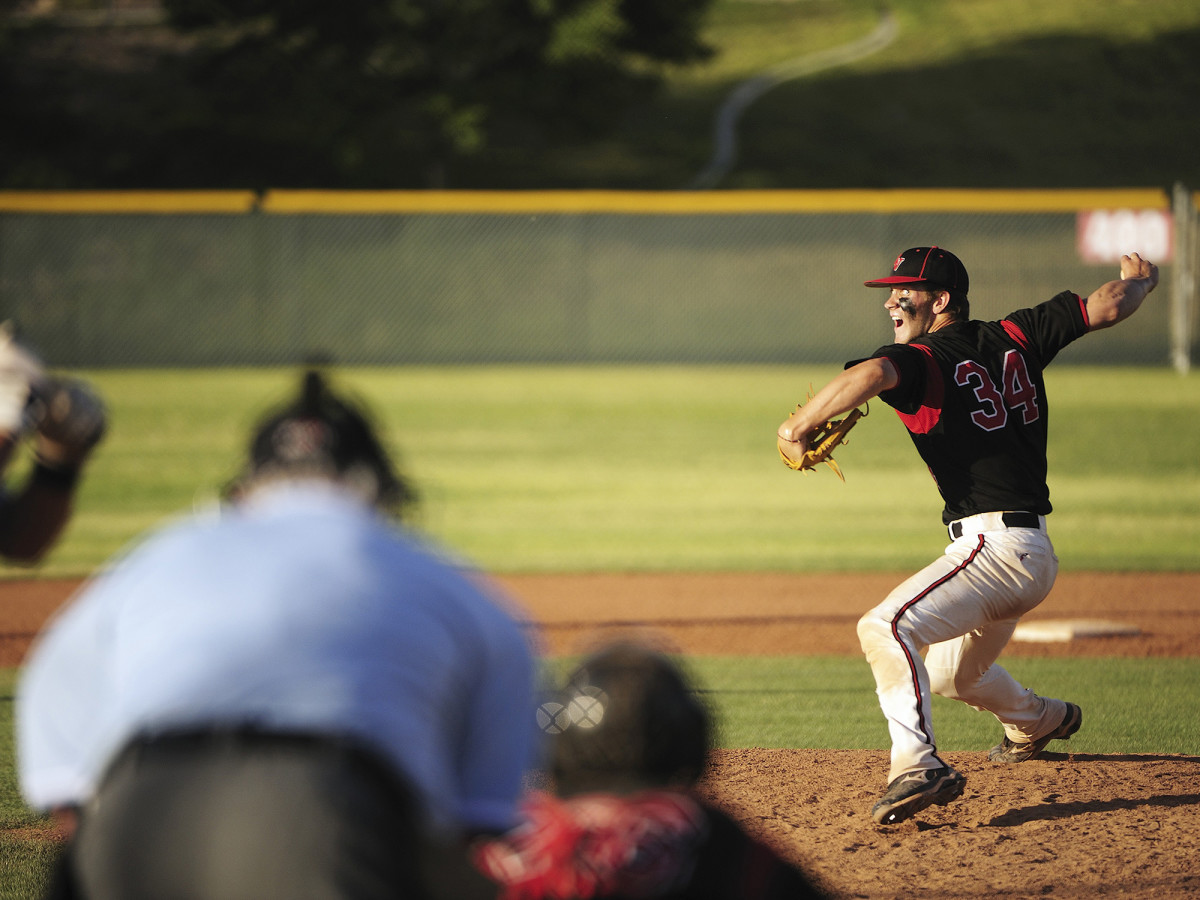Remembering Bryce Harper's Sports Illustrated Debut 10 Years Ago

Welcome to the Weekend Read. This week Tom Verducci reflects on writing his cover story on high schooler Bryce Harper, we pick out our favorites stories of the week and unearth a photo from Harper's days as a pitcher. Subscribe here to receive this weekly newsletter in your inbox.
Editor's note: Saturday marks 10 years since Bryce Harper first graced the cover of Sports Illustrated as a 16-year old. Tom Verducci, who wrote the 2009 cover story, reflects on his experience watching and meeting Harper for the first time, and how the slugger reached outsized expectations.
There is a story Eddie Bane, then the scouting director of the Angels, likes to tell about the moment he knew he had to draft Mike Trout. It is a great scouting story because the tipping point had nothing to do with watching Trout play baseball.
It was a night in the spring of 2009 when Bane went to a Millville, N.J., rustic restaurant with Trout and his parents, Jeff and Deb. Bane could feel the love within the Trout family and how Mike had been raised so well. That was the night Bane was sold on Trout.
“These guys just had the perfect blend of how to bring up a kid,” Bane said.
I have a similar story with Bryce Harper in Las Vegas, and it happened around the exact same time Bane was sitting down with the Trouts.
I had heard through various baseball sources about this high school sophomore in Las Vegas who as a freshman batted .590 and was hitting home runs measured at 502 feet (off the back wall of Tropicana Field) and as far as 570 feet (at his high school field). I packed a healthy amount of skepticism and worry (we just don’t write about many 16 years olds in SI, so this could be too much for someone so young), and headed to see Harper.
I watched him play a high school game. He hit a line drive that the second baseman appeared to dodge for safety’s sake, like jumping out of the street upon seeing a speeding car. The baseball sizzled all the way to the fence for a triple. Harper swung so violently against high school pitching that he must have hit three or four towering foul home runs that seemed to disappear out of sight. The bat speed was scary—as a high school freshman Harper had top 10% major league bat speed.
Okay, but it’s high school baseball, I thought. Metal bats, 80 mph heaters and sloppy curves.
It was only when we went to dinner that night—myself, Bryce and his mom and dad, Sheri and Ron—that I knew this kid was more than just another high school phenom with an early growth spurt. It was clear he was raised in a loving family. Bryce was polite and supremely confident. He looked me in the eye when he spoke. I was blown away by how comfortable he was in his own skin at age 16.
That was the night I stopped worrying about whether an SI feature might put too much pressure on a 16-year-old. I had no idea the story would be a cover story, but even then I knew Bryce could handle it.

Every game he had ever played—every at-bat he took—was a referendum on whether he was as good as the hype. Bryce Harper was 16 and had never taken a meaningless, out-of-the-spotlight at-bat—and it was just the way he wanted it.
When I got home I called Damon Oppenheimer, the Yankees’ scouting director. Damon’s a smart guy who has been in the business a long time. He doesn’t get excited. He understands scouting is a hard business, full of broken hearts and kids who peak at 18. Harper had already been on the Yankees’ radar since he was a seventh grader, when one of Oppenheimer’s bird dogs, Steve Kmetko, told him this is one of those rare players who are so advanced you see them coming early. Damon is not the kind of baseball guy who will give you a gushing quote because he likes seeing his name in print. Damon, I knew, would give me a clear-eyed assessment of Harper.
The first time Oppenheimer saw him play—the first at-bat—Harper hustled a sure single into a double with a hard, headfirst slide.
“He played the game in a real, ferocious-type deal,” Oppenheimer said. “He was out there to win and to play hard.”
And then Oppenheimer—this is 2009, remember—added this: “In an old-school, Philly way.”
Nothing in baseball is certain. Oppenheimer has been around too long not to know that. But this Harper kid, he told me, is the real deal. I could throw away my skepticism.
I wrote that Bryce could be the LeBron James of baseball, which of course in a world in which we’ve lost nuance and context many people took the wrong way. I wasn’t saying Harper would be as great in his sport as James was in his. The point was that Harper, like James, was incredibly advanced as a high school athlete. Baseball, which is so skill specific it demands thousands of repetitions, just does not lend itself to such prodigies. The greatest players must start in the minors, and many of them struggle.
But in Harper, who was so well formed as a player and person, I saw a new world emerging in baseball. If this kid is playing 125 games a year, including many of them against elite national competition, not just local rec ball, and he’s doing it in the spotlight, then why can’t he shorten baseball’s long learning curve? And like James, Harper possessed a physical maturity as a high school athlete where he looked like a big leaguer—i.e., his bat speed.
Harper made it to the big leagues at 19. So did Trout. They excelled immediately. Those two players opened the gates to this new era in baseball, one that blew up that notions that a player needed 500 games of minor league seasoning and that teams couldn’t trust young players because young players “make mistakes.”
In 2009, when I wrote the Harper story, players 25 and under took 23% of all major league plate appearances. Last year it was up to 28%, representing 7,570 more times teams trusted such a young player.
You read the quotes from Harper in 2009 and you might have written him off as a cocky kid. You might think, Who is this kid who talks about wanting to be one of the best players of all time? Get over yourself, Narcissus.
But I heard him, met his family, saw the conviction and aspiration in his bearing, and I thought, This kid loves baseball, he wants to be great and he absolutely owns it. Ten years later, it’s still true.

Recommended Reading
• Meet the 23: Get to know the players trying to win it all again for the U.S. at the Women’s World Cup.
• NBA Draft Big Board 7.0: Updated top 100 prospect rankings and scouting reports as draft day gets ever closer. (By Jeremy Woo)
• The story of the save is not a simple one. This is the origin story of a stat that changed the game forever. (By Emma Baccellieri)
• How do you start a national team? How do you build a World Cup? Let's look back on the early days of the U.S. Women's National Team. (By Grant Wahl)
• As a part of the MMQB's Bad Takes Week: New Orleans should build a stadium that hosts the Super Bowl every year. (By Albert Breer)
• Bookmark this: your one-stop shop for the 2019 NBA draft, featuring the latest rumors, intel, mock drafts, analysis, rankings and more.

Vault Photo of the Week: Bryce Harper, Pitcher
There's a lot going on here. High school prospect Bryce Harper is pitching. He's got more than enough eyeblack on. And then there's his face. Look at his face! Mouth agape and eyes bulging with ferocious intensity. How did you look playing high school sports?
Photograph taken by SI's Robert Beck in 2009.
Best of the Rest
Editor's note: Below are some of our favorite stories of the week not published by SI. This week's list is curated by Emma Baccellieri.
• This week marked a decade since Mike Trout was selected with pick No. 25 in the 2009 MLB Draft. Ever since, baseball has been trying to figure out just how so many teams missed on the best player of his generation—but this oral history is the most comprehensive (and interesting!) yet. (By Keith Law, ESPN)
• I know absolutely nothing about college gymnastics, but I was fascinated by this deep dive on the history of the team at the University of Utah, a billboard they put up twenty years ago, and what it means to market the sport. (By Dvora Meyers, Longreads)
• “When other travelers see the Raptors, they look as if they have just seen actual velociraptors with roller bags.” The Raptors’ travel routine is less glamorous than you might expect, but this story is delightful. (By Ben Cohen, Wall Street Journal)
• There’s such a thing as… competitive musical chairs? YES. (By Laura Wagner, Deadspin)
• “Neither a greenhouse nor a botanical garden is nature, of course, any more than tennis is; they are cultural expressions. At their best, though, gardens and sport, like grand mountain chains and spectacular sunsets, can approach the sublime.” How the French turned a tennis court into a garden. (By Gerald Marzorati, The New Yorker)
• Barry Svrluga is a must-read on baseball, but he’s… whatever’s beyond a must-read (should-be-universally-contractually-obligated-to-read?) on his family history, in this beautiful piece about his grandfather and D-Day. (By Barry Svrluga, Washington Post)
